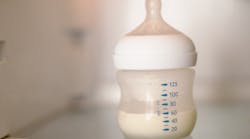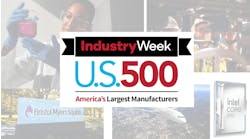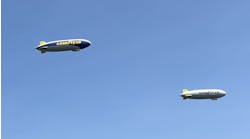IndustryWeek's elite panel of regular contributors.
Due to global supply chain disruptions over the past two years, Americans are getting used to product shortages, but they were still surprised by the recent shortage of baby formula. As of the end of May, Atlanta and Sacramento experienced an out-of-stock rate of 94.6%, putting babies at risk, especially those with special metabolic needs.
As an immediate relief measure, military planes were used to transport baby formula from Europe to the U.S in late May, and the FDA allowed additional shipments from the UK and Australia in early June. On top of that, Abbott resumed its production at its plant in Sturgis, Michigan, in early June. Despite all these measures, Americans have been shocked to learn that this crisis will not end until July.
As parents are struggling to find baby formula for their infants in the United States, there is plenty of blame to go around. Who are the suspects? Who is guilty? There are many culprits, except for one that has been widely blamed: industry concentration, which is an innocent bystander.
raising serious concerns with the FDA in October 2021 over its products containing potentially lethal cronobacter bacteria, Abbott did not shut down its factory or issue a recall until after the FDA discovered damaging issues during its February 2022 inspection.
Undoubtedly, the crisis would have been less severe had Abbott adopted the Toyota Production System by fixing its own quality issues at the source as soon as they arose.
The runner-up suspect is the FDA. Some blame the FDA for its inaction and lack of urgency especially when the FDA learned of Abbott’s quality control issues as early as 2019. Partly because FDA inspection was disrupted by the COVID-19 pandemic, the FDA did not inspect Abbott’s Michigan plant until February 2022. Others blame the FDA for its bureaucratic inflexibility. Abbott and other producers have plants in Europe and other countries, but milk formulas sold in Europe are banned in the U.S. because they exceed the FDA’s nutritional standards due to technicalities, like labeling.
Another leading suspect is the federal Women, Infants, and Children (WIC) program that funds over half of the baby formula purchased nationwide. States solicit competitive bids from milk formula producers, but those bids rely upon sole-source contracts. Consequently, the WIC contracting process has an unintended outcome of enabling the “approved” state provider to become a near-monopoly of the formula market for that state. Here is why. Not only do WIC families purchase solely from their state’s contracted brand, but retailers also have incentives to give this brand greater prominence and preference, resulting in most non-WIC families buying that brand too.
The last suspect is industry concentration. The popular press blamed the milk formula crisis on too few U.S. manufacturers. Several well-meaning politicians blamed industry concentration as the culprit. In the United States, 90% of all production of baby formula is controlled by four companies, with Abbott taking 40% of the market. But these four companies have multiple plants. Abbott, for example, has additional plants in the U.S. and overseas in Europe. Supply diversification is about how many different plants there are in the U.S., not how many corporate headquarters. Some journalists and politicians have conflated the two, unfortunately blaming industry concentration.
Because of the sheer size of the WIC program and its competitive bidding process, the profit margins for producing milk formula are lower than for producing drugs. As such, a milk formula producer can stay in the market if it can keep its cost low via economies of scale by producing and selling a large volume. Because the market conditions for milk formula are similar to the flu vaccine market, it is a natural consequence to have a handful of firms that can stay in the market.
Also, milk formula is a staple with stable demand, so there is no incentive for producers to invest in “just-in-case” capacity or convince investors to finance it. The more competitive the industry is, the less profitable individual firms in this industry are, and the less “just-in-case” capacity there will be. Thus, competition is great for reducing baby formula prices in normal times, but it increases the risk of supply disruptions (as research shows here, here, and here).
President Joe Biden requested that the Federal Trade Commission investigate whether industry concentration contributed to the milk formula shortage. We believe this investigation will lead nowhere because industry concentration is a result of economic forces and has not contributed to the shortage.
However, there is a need to reform the FDA because the Food and Drug Administration's failure to do its own job is the root cause of the milk formula shortage. The Department of Health and Human Services’ Office of Inspector General (OIG) announced on June 2, 2022 that it will investigate the FDA’s actions, especially the FDA’s inspection of Abbott’s Michigan plant and how the agency oversaw Abbott’s initiation of the infant formula recall.
The good news in the short run is that Abbott has resumed production at its Michigan plant in early June. But the crisis may continue beyond July. Our recent research shows that once panic buying mentality sets in, it is really difficult for consumers to switch back to normal purchasing habits. Even if the supply exceeds the demand, panic buying and hoarding are likely to persist unless companies can produce more than the demand and additional baby formula can be imported to flood the shelves and signal an overabundance of supply.
In the long run, if the FDA can increase its inspection capacity and improve its operational efficiency to pre-approve some milk formula sold in other countries, we can reduce the impact of this shortage and diversify our supply of milk formula to ensure future supply security and resilience.
Mr. Volodymyr Babich is a Professor of Operations and Information Management at the McDonough School of Business, Georgetown University. Mr. Christopher Tang is a Professor of Supply Chain Management at the UCLA Anderson School of Management.






